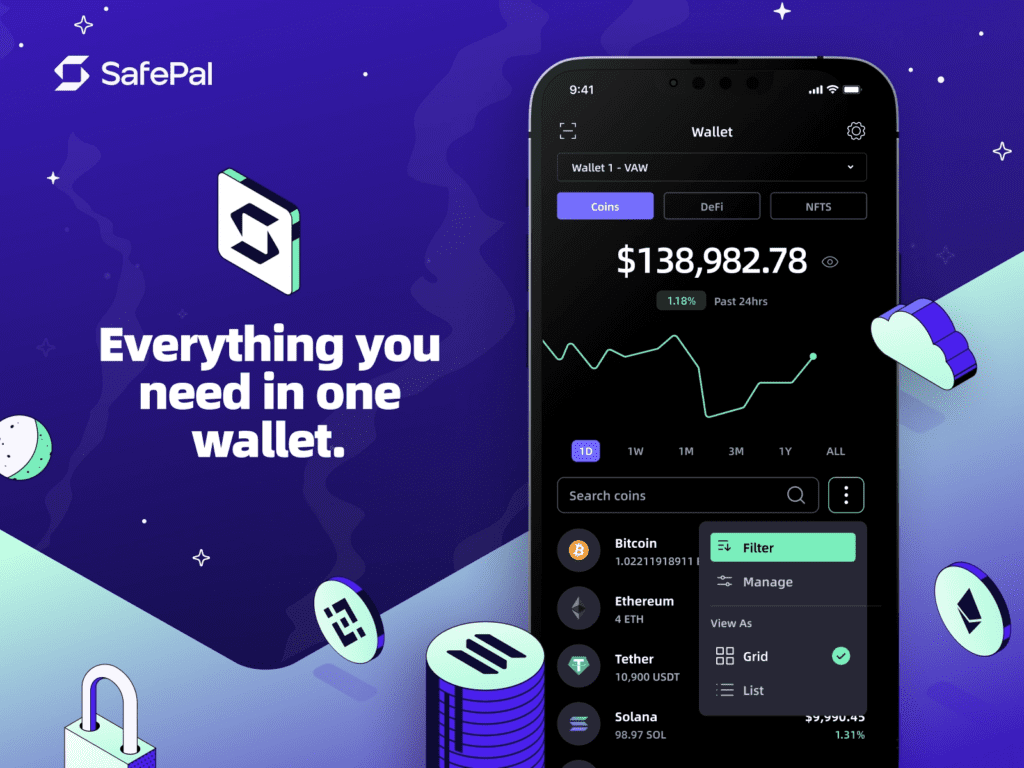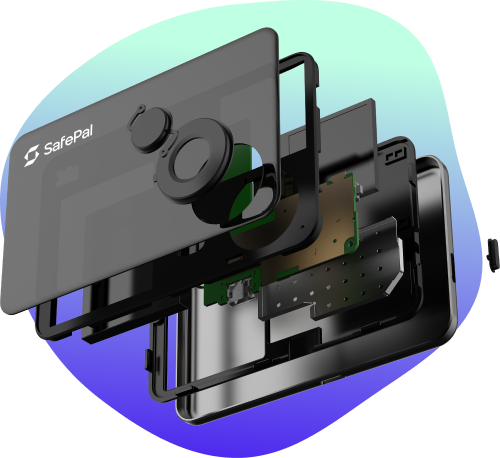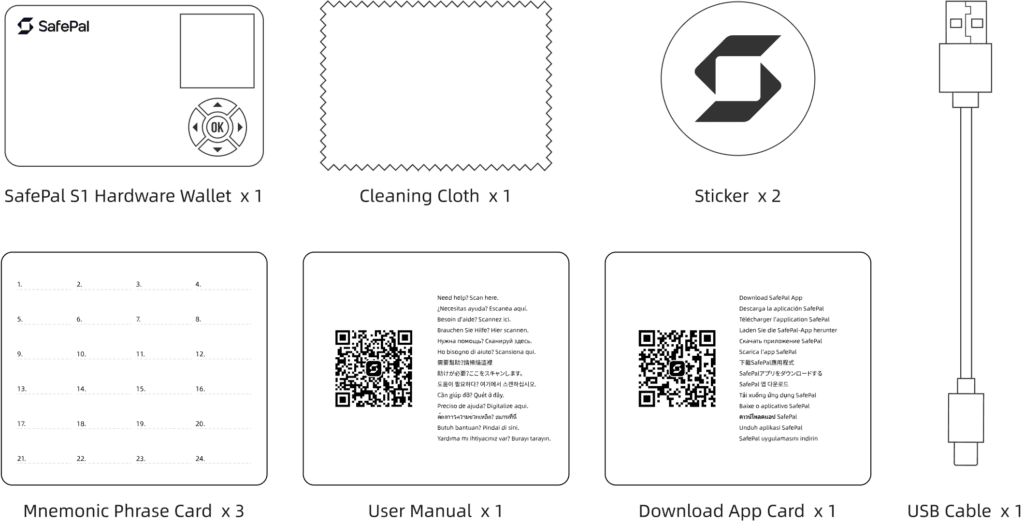This SafePal Wallet review will introduce to you what Safepal wallet is. Is it safe to use this cold wallet? Is this a legit wallet product?
For most crypto investors, keeping them safe is always a top priority. There are many options for storage, but to ensure your assets are safe and suitable for different purposes, hardware wallets are the best solution today. SafePal is a unique wallet product simply because it combines convenience and security by giving users the option between hot and cold wallet products. In other words, you can use SafePal as a mobile app, browser extension, or physical wallet.
What is SafePal Wallet?

SafePal Wallet is a crypto wallet that can keep your cryptocurrencies safe. The best way to store your crypto is to keep it in a private wallet and shut down crypto exchanges. By managing your assets yourself, you ensure that only you can access them.
Cryptocurrency exchanges, even the big ones, can be hacked, and customer funds can be stolen. Exchanges can also shut down, as we saw with FTX, and customer funds cannot be withdrawn. Therefore, it is much safer to withdraw your crypto from exchanges and keep it safe in a wallet like SafePal.
SafePal offers three types of wallets. It has two hot wallets, an app you can download to your device, and a browser extension. This wallet also has a hardware wallet that is not connected to the internet. Hardware wallets are the safest place where you can store your cryptocurrency.
Where hardware wallets are more secure because it stores your private keys offline and since it never connects to the internet there is no risk of being hacked.
Admittedly this is a very rare feature! Most crypto wallet providers focus on providing their users with a single wallet, be it a digital or hardware wallet. With SafePal cold wallet, you really have a lot of options.
How does Safepal Wallet work?
App wallets, also known as software wallets, store your private keys on your device. Since your phone is connected to the internet, this can make your private key vulnerable to theft.
With a hardware wallet like SafePal’s hardware wallet, your private keys are stored on the hardware wallet itself, 100% offline. It is never connected to the internet, so your private key cannot be stolen. When making a transaction, you must verify it with the device itself.
One misconception with crypto wallets is that your cryptocurrency is stored in the wallet. Your cryptocurrency is always on the blockchain, but a hardware wallet stores your private key and allows you to verify transactions using a physical device. Cryptocurrencies never leave the blockchain.
This is a good thing because if you lose your hardware wallet, you won’t lose your crypto. You can buy a new hardware wallet, and after setting it up, enter your root phrase from the wallet you lost and you will be able to reaccess your crypto.
Safepal S1 hardware wallet

SafePal is a relatively new app in the hardware wallet space and is, of course, a unique one. Backed by Binance Labs, Trust Wallet, and the Litecoin Foundation, it is an affordable, portable cold storage option. SafePal S1 supports an unlimited number of cryptocurrencies. You can store as many assets as you want in your SafePal wallet.
A D-pad button below the device’s color screen is used to navigate various menus, and a camera scans QR codes when signing transactions. SafePal has no wiring (other than a port to charge the battery and receive updates). SafePal is almost “isolated” from the internet after the update. The only way that SafePal communicates with the outside world is through the information displayed on the screen.
Since the device is almost never plugged into a machine with an internet connection, many attack vectors have been eliminated. However, this comes at the cost of usability, as the process of using capital is a bit cumbersome. The user pairs the wallet with a smartphone app and relays information between the two wallets via a QR code.

That said, SafePal’s smartphone compatibility and no cables make it portable and convenient to use on the go. Like most (if not all) hardware wallets today, the device requires a PIN to be entered. Users can choose to create 12-word or 24-word mnemonic phrases.
The biggest downside of SafePal is that it feels rather fragile. But again, it is one of the cheapest hardware wallets out there.
Functions
Buy Crypto with Credit Card + Swap/Spot
When looking for a crypto wallet, once you’ve addressed security, the next big question will often involve the (diversity) number of crypto assets the wallet supports. The wallet currently supports 54 chains (networks) and thousands of different coins & tokens.
Speaking of extras, something that has become very popular is buying cryptocurrencies directly from your wallet without having to register and use the services of the exchange platform. Today, many of the industry’s leading hot and cold wallets offer this feature – again, it’s all about convenience and ease of use.
Naturally, SafePal also offers this feature to its users. You can buy different cryptocurrencies and tokens directly from your wallet using a credit or debit card.
In addition to simplified cryptocurrency redemption, SafePal also offers users the ability to swap cryptocurrencies from within the wallet, as well as participate in spot trading. While crypto redemption is a fairly common feature, the same cannot be said for swaps and spot trading in terms of wallets.
Staking
As the cryptocurrency industry grows, different wallet providers aim to provide their customers with more and more features. One of the most notable additional features that the SafePal cold wallet offers its users is the stake-to-yield function.
NFT storage
While the popularity of NFTs may be even more volatile than the crypto market, there is no denying that these tokens have become an integral part of the industry. However, one of the biggest challenges NFT holders face is similar to that of “traditional” crypto enthusiasts – finding a reliable wallet to store their assets in. your digital. SafePal comes into play – it allows you to keep your non-fungible tokens.
SafePal Token (SFP)
In January 2021, SafePal introduced the SFP utility token to the SafePal ecosystem. SFP is a decentralized token based on Binance Smart Chain (BSC). So far SafePal has issued around 500,000,000 capped SFP tokens.
SFPs can be used in a variety of ways, including:
- To pay fees: Users can pay with SFP and get discounts on SafePal products such as SafePal hardware wallet and SafePal Swap.
- For Staking Rewards: You can stake SFP tokens to qualify for SafePal Earn rewards. Staking means keeping money in a crypto wallet.
- For Bonuses & Airdrops: Holding SFP tokens gives you the privilege of receiving special coupons and collectibles from SafePal and SafePal partners.
- In community governance: SFP token holders can vote on new features and initiate proposals, including new blockchains on SafePal products.
Basic User Manual
Set Up Your SafePal S1 Hardware Wallet
Step 1: Device authentication step-by-step guide
Step 2: Create a new wallet in the S1 hardware wallet

Or recover a wallet in the S1 hardware wallet

Step 3: Add your favorite coins/tokens into the wallet
Add coins into the hardware wallet account
Step1: Upgrade your S1 hardware wallet firmware to the latest version from the SafePal website
Step 2: Open the SafePal App, on the ‘Asset’ page, click the + icon in the right middle corner

Step 3: Select all the coins that you want to add, and click “Add Coin”

Step 4: Scan back and forth between the App and the S1 hardware wallet, so that the ‘Add Coin’ info is transferred to the S1 device and activate the coin algorithm.

Step 5: Congratulations! The coins are successfully added! Now you can manage your favorite coins on SafePal!

B. Add tokens into the hardware wallet account
You don’t need to sign with the S1 hardware wallet in order to add new tokens into the SafePal App. Simply follow the below screenshot to add new tokens into the wallet and you are good to go!
Special note about XLM tokens: To add any XLM tokens, you will still need to use the S1 hardware wallet to scan and sync the information. Each newly added XLM token will consume 0.5 Stellar (XLM). Once an XLM token is deleted, the 0.5 Stellar (XLM) will be returned.
To send an XLM token, both the sender and the receiver need to add the specific XLM token in their wallets first.

C. Custom add tokens like ERC20, TRC10, and TRC20 tokens
This feature enables users to add a new token when the token cannot be found in the SafePal App yet. Following is the example of adding ERC20 TOMO Token into the SafePal wallet:
1. Open the “Coin Management” interface in the SafePal App and choose “Add Custom Token”.

2. Fill in the needed information. All of the inquired information can be found on the blockchain browser.
Since TOMO is an ERC20 Token, the information about it can be found on the Ethereum browser at “https://etherscan.io/“.


3. In a few seconds after submitting the information, you can see that the TOMO token has been successfully added to the SafePal App! Now you are good to receive and pay with your TOMO token.

How To Create A SafePal Software Wallet
Step 1: Download the SafePal App
Download the latest SafePal App from www.safepal.com/download or scan the download QR code below:

Step 2: Set up the Security Password
The first step to set up the SafePal App is to set a Security Password. The Security Password of the SafePal App is a set of at least 8 alphanum (letters and numbers) that is used to change the security settings such as fingerprint, pattern, and fast payments.
Since SafePal does not store your private key, seed phrase, or passwords, once the Security Password is set, remember it tightly. Because if you forget it, the only way to restore it would be to re-install the SafePal App and recover the wallet.

Step 3: Set up the fingerprint and pattern (Optional)
Fingerprint and Pattern are two useful features to save your effort in signing a transfer or authorize a DApp login. When you have set a fingerprint, for example, you can enable it for signing in to the App settings, so that you don’t need to enter Security Password at every transfer.
Fingerprint and Pattern are optional. If you don’t want to set one, just feel free to skip it.

Step 4: Create a software wallet
Once the App set up completes, the next step is to add a wallet. To create a new software wallet, click ‘Software Wallet’— ‘Create Wallet’, and enter the Security Password that you set at Step 2.

Then you can set the wallet name, and select how many seed words you want to create for the mnemonic phrase. SafePal software wallet supports both generating12 and 24 seed words.
Note: At this step, the Passphrase feature in the Advanced setting is an optional setting. It is an advanced feature used to create a hidden wallet under the mnemonic phrase. If the Passphrase is lost, the Passphrase-enable wallet will be lost, too. So please be careful if you choose to set a Passphrase. We don’t recommend crypto beginners to set such a feature.
After setting the wallet name and choosing the number of seed words, click ‘Next’ and a new wallet is created.

Step 5: Back up the mnemonic phrase
This step is the most important step. As a decentralized wallet, SafePal doesn’t store any of your personal information such as password, mnemonic phrase or Passphrase. If you lose your mnemonic phrase, you lose the crypto funds stored in it. So do remember to back up your mnemonic phrase in time.
Security Tips:
- Always make sure that the backup mnemonic phrase is correct, proofread multiple times.
- When backing up your mnemonic phrase, we strongly recommend utilizing physical media, such as writing on the mnemonic phrase card or a metallic board such as the SafePal Cypher. You can also keep multiple back-ups of it.
- For security, do NOT take photos of your phrase.
- Make sure the mnemonic phrase is kept in the secure offline locations that no one can get hands-on, such as a safe box.

Step 6: Add your favorite coins/tokens into the wallet
Now you have set up a SafePal software wallet successfully, the last step is to add your favorite coins/tokens into the wallet. Click the ‘+’ icon at the asset page, search for your favorite coins/tokens, then you can add them to the asset list. Enjoy!~

Conclusion – SafePal Wallet Review
SafePal is one of the crypto wallets to try. It focuses a lot on the security aspect of its services. The wallet also has a variety of features, supports buying cryptocurrency in the wallet and comes in three different forms (apps, browser extensions, and hardware wallets),
but the core focus remains on security features. No matter how many fancy features a wallet may have, if it lacks security, it should generally be avoided, as you risk losing your crypto assets if you store them on there.
DISCLAIMER: The information on this website is provided as general market commentary and does not constitute investment advice. We encourage you to do your own research before investing.
Join us to keep track of news: https://linktr.ee/coincu
Foxy
Coincu News






















